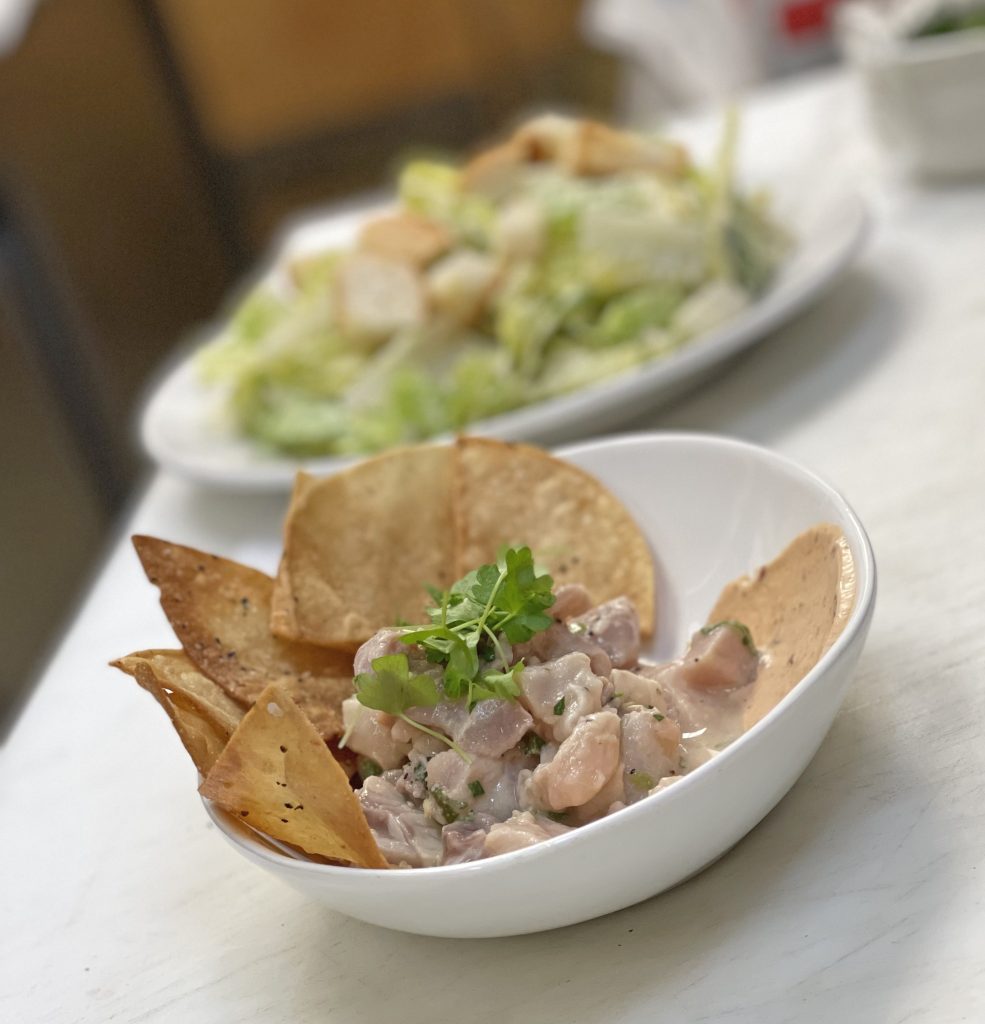 By Paul Suplee,
By Paul Suplee,
MBA, CEC, PC-3
Yes indeed, it is a wonderful morning as I look out my office window. The pool is getting prepared for opening, my body aches from head to toe from the work I did on the front gardens yesterday and I can smell summer in the air. I am lagging on the unpleasant task of cleaning the tiki bar. With all of my running around, it is still caked with the pollen from the beginning of last month.
And once I have this under control, it will be time to get things lined up for the season — yes, the fishing season. Summertime means a great many things to those of us who live down here, but in the last three years, my love of bay-fishing has blossomed into offshore fishing, thanks to my girlfriend.
Even though I grew up on the Magothy River outside of Annapolis, I had yet to jump offshore to catch the giants. In my youth, we had the ubiquitous single-person sailboats, smaller powerboats, larger sailboats and, of course, canoes. We fished off the docks, went crabbing and otherwise did what low-knowledge middle-class kids did to hunt and forage for their meals.
When I had a chance to go offshore with my lady friend a few years ago (she is a kind and gentle soul who is also an offshore juggernaut) I knew I was hooked, no pun intended. I spent decades looking at all of those behemoth vessels at the docks, wondering what it was like to venture out to the deep seas in hopes of catching a monster.
Perhaps it was Hemingway’s mastery of the seas that I had read since I was a small lad that gave me the yearning to give it a shot. Either way, once it happened, I realized that it was going to be a part of my life, if not a very expensive habit. I started saving my money.
One of the most satisfying parts of fishing for me is in the “spoils of war” — the meat. As a cook who is finally getting the hang of this cooking thing, I love portioning and cleaning the filets, vacuum packing and freezing for future use and otherwise knowing that we will be fed for a while to come. And of course, no proper chef would waste an ounce of good meat (it is completely disrespectful to the animal who unwittingly gave its life).
So, as long as it is good, quality fish, it can be diced and made into stews, soups or my favorite, ceviche. Who doesn’t like a good, fresh ceviche? I mean, besides vegetarians, which I completely understand. Regardless, for those of us who love seafood, ceviche is a masterful dish and perfect for a hot summer day on the dock.
I fish with my buddy Kurt and his dad and they frequent other regions such as Florida, the Bahamas and Costa Rica. I have yet to do that, but the stories are aplenty.
A number of seasons ago, they shared their version of ceviche that they saw in Costa Rica. The fish of choice for this is mahi-mahi, aka dorado or dolphinfish. Using the premium part of the loin, it is simply mahi and cream cheese on a Ritz cracker topped with a touch of wasabi and a splash of soy sauce. Incredibly simple, the flavors abound.
New at the Berlin restaurant is Chef Christopher, who spent some time in Los Angeles. Of course, a chef can’t help but perfect seafood when cooking in LA, and I was thrilled to see a stunning batch of ceviche being served from the scraps from breaking down the fresh filets.
Even he will tell you how simple ceviche is to make, but it is important to use fresh all the way around. Freshly diced fish is perfectly matched with fresh citrus juices. Cilantro can be added, as can avocado. Just think summer, and you can make a ceviche. And just make a ceviche, and you can imagine that summer is finally here.
Ceviche
makes about 1 quart
3 c. Diced tender raw seafood
2 ea. Fresh jalapenos, sliced thin
1 c. Fresh orange juice
1 c. Fresh lime juice
Salt & Cracked black pepper
Pickled red onions (recipe follows)
1. While this dish is a godsend to chefs in that we can utilize fish pieces instead of discarding them, make sure that you are using the premium parts of the filet. If you use pieces with a lot of cartilage, it will be unpleasant and overly tough.
2. Combine everything except for the pickled onions and place in the refrigerator for at least 30 minutes.
3. Serve with freshly fried tortilla chips, pickled onions and a smear of spicy mayonnaise.
4. Optionally, you can serve this with avocado, a natural go-to that perfectly meshes with the dish.
5. Serve with a good Bahamian or Mexican beer to have the full effect. Trust me, you won’t regret it.
Pickled Red Onions
makes about 1 ½ cups
A large red onion, julienne
1 c. Red wine vinegar
1/2 c. Sugar
1. Place the onions in a metal bowl after cutting them.
2. Bring the vinegar and sugar to a boil, and then immediately pour over the raw onions.
3. Place the bowl in the refrigerator to allow them to cool completely.
4. That’s it. The easiest “pickle” in the world.
—Paul Suplee is a Professor
of Culinary Arts at Wor-Wic
Community College and
owner of boxcar40.
Visit him at www.boxcar40.com.
